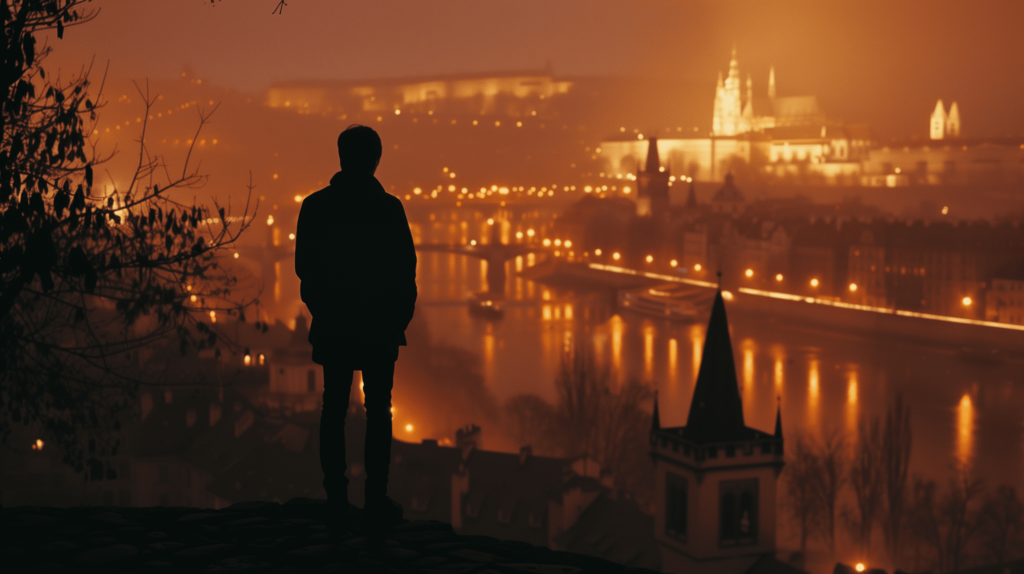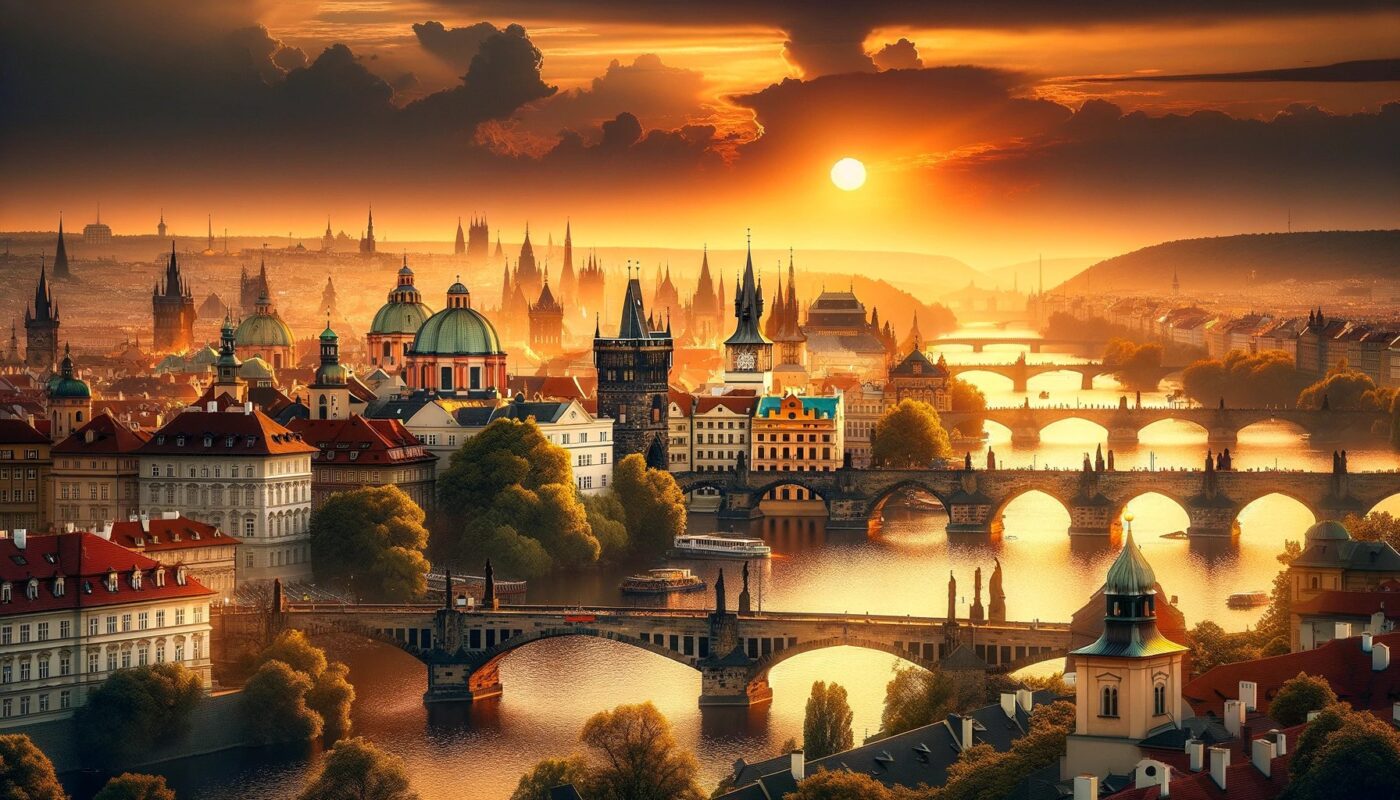Prague, the pearl of Europe, attracts with its splendor and mystery. A city where every stone in the street whispers stories from the distant past, yet manages to stay in the pulse of modern life. It is a place where historical relics and architectural masterpieces intertwine with picturesque streets and cultural diversity to create a unique atmosphere.
Architectural grandeur
Walking around Prague, one can’t help but feel the impact of its buildings, embodying history at every turn. The Gothic cathedrals that tower over the city, such as St. Vitus Cathedral, are art created over centuries. Its sharp arches and stained glass windows tell of a time when building was both a prayer and a curse. Nearby stands Prague Castle, a fortress whose walls have seen kings and sieges, surviving the city’s periods of prosperity and decline.
Baroque palaces with their refined facades and lush gardens, such as Wallstein Palace, showcase an era when Prague was a center of power and culture. These buildings are not just stones; they are testimonies to the eras, the people who built them and the stories they preserve.
Streets filled with history
Walking along the sidewalk of the small streets, you plunge into the atmosphere of the past. Each turn reveals a new page of history. Mala Strana, with its narrow alleys and hidden courtyards, is like the setting for a Renaissance movie. Here every stone on the sidewalk, every facade of a house tells its own story.
The Charles Bridge is not just a path across the river, but an open-air museum where statues of saints gaze out at passers-by, reminding them of centuries of faith and art. This bridge connects the historic districts of the city, being a symbol of its continuity and continuity.
Walking further, you will come across the Zidov Quarter with its ancient synagogues and cemetery, where every monument speaks of the complex history of the Jewish people in Prague. These places carry echoes of the past, calling you to remember and respect the stories they preserve.
Each corner of Prague is a mosaic of stories intertwined with legends and reality, creating a unique sense of time suspended among the stone streets.
Cultural diversity
Prague, like a kaleidoscope, reflects the diversity of cultures that meet and merge in its streets and squares. Festivals, musical and theatrical performances are not rare here, but rather a trademark of the city, demonstrating its hospitality and openness to the world. In the summer, the city comes alive with the Open Air Jazz Nights, and in the fall it brings together art lovers from all over the world for the International Music Festival. These events not only entertain, but also promote dialog between cultures, enriching Prague’s spiritual and cultural landscape.
Prague’s museums and galleries are repositories of the world’s treasures. The National Museum and the Gallery of National Art offer a journey through time and space, from ancient artifacts to contemporary art. A visit to these places provides a deeper understanding of the region’s complex history and its contribution to the global cultural mosaic.

Culinary delights
Prague’s gastronomic scene is a gourmet’s paradise, where traditional Czech cuisine meets global gastronomic trends. Street fairs and markets such as Naplávka offer fresh produce and the opportunity to taste authentic Czech specialties right on the street. Restaurants and cafes dotted around the city offer a surprising variety of dishes, from classic meat goulash, roast pork and hearty dumplings to gourmet desserts like traditional honeydew.
The secrets of Czech cooking are hidden not only in the recipes, but also in the atmosphere that reigns in local establishments. Cozy beer halls with their rich selection of local beers invite visitors not only to enjoy a drink, but also to plunge into the atmosphere of true Czech hospitality.
Each culinary institution in Prague carries a piece of the city’s history and culture, making the journey through its culinary map not only tasty, but also educational.
List of places to visit
- Prague Castle – the oldest architectural complex, including palaces, cathedrals and gardens, offering panoramic views of Prague.
- Old Town Square – the heart of the city, home to architectural masterpieces including the Astronomical Clock and St. Nicholas Church.
- Vysehrad – a historic fort offering many archaeological finds, medieval buildings and breathtaking views of the Vltava River.
- Zidov Quarter – an area with a unique heritage, home to ancient synagogues and the oldest Jewish cemetery in Europe.
- The National Museum – the country’s main museum complex, featuring an extensive collection of art, culture and historical exhibits.
- Petrin Tower – a small replica of the Eiffel Tower, offering panoramic views of the city from its observation deck.
- The Sternberg Summer Residence is a fine example of Baroque architecture with beautiful gardens and rich art collections.
Nature and recreation
Stromovka Park is a real green lung of the city, where you can stroll along shady alleys, have a picnic on the lawn or enjoy a rest by the lake. This park is a popular place among locals for walks, sports and outdoor recreation.
The gardens on the slopes of Prague Castle are a complex of several gardens, each with its own unique atmosphere and design. Here you can enjoy not only vegetation but also marvelous views of the city.
Kampa Island is an oasis of tranquility right under the Charles Bridge, known for its green spaces, sculptures and watermills. This place is ideal for quiet walks and secluded vacations.
The Botanical Gardens are a treasure trove of flora with plants from all over the world. Exotic greenhouses, themed gardens and vineyards make it a place not only for relaxation but also for exploration.
FAQ
St. Vitus Cathedral is a prominent representative of Gothic architecture in Prague.
Open air jazz nights are an attractive event for jazz lovers in Prague.
Mala Strana is known for its narrow alleys and hidden courtyards, creating a Renaissance atmosphere.


